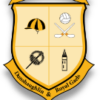Downloadable Welfare Booklet
Download the Player_Welfare_Booklet. This document has information on a wide range of topics including injury prevention, nutrition, hydration and more.
Fitness
Download a Fitness_Testing_Guide
This guide is presented as a service to athletes, coaches, parents and exercise physiologists who wish to evaluate their own or someone else’s fitness level, or to gain a greater understanding of tests that they have performed.
There are probably hundreds of standard fitness tests used, and hundreds more variations of these. They can range from elaborate and expensive laboratory tests to simple and inexpensive field tests. Each test also has many advantages and disadvantages that can ultimately determine which is the most appropriate test to perform. If you are designing your own fitness testing regime, with the information about the relative merits and requirements of each test that is contained in this guide, you can make an informed choice on the most appropriate test or tests to use.
Nutrition
Maintaining good nutrition is essential for everyone, but for serious sportspeople, it can be the difference between winning and losing. When you consider that all teams contain talented players and conditioning levels are high, nutrition can be the most important factor in improving performance.
Please click on the links below for a document with more information on each area:
Contains information on:
General Information
Nutrition for the Immune System
Losing Weight for GAA Footballers
Additional resources and information below:Contains information on:
* A sample High Carbohydrate, Low Fat Diet & Advice on Reading a Food or Drinks Label
* Irish Nutrition and Dietetic Institute resource booklet
Sports Injuries
What Are Sports Injuries?
The term sports injury, in the broadest sense, refers to the kinds of injuries that most commonly occur during sports or exercise. Some sports injuries result from accidents; others are due to poor training practices, improper equipment, lack of conditioning, or insufficient warm-up and stretching.
Although virtually any part of your body can be injured during sports or exercise, the term is usually reserved for injuries that involve the musculoskeletal system, which includes the muscles, bones, and associated tissues like cartilage.
Common Types of Sports Injuries
* Muscle sprains and strains
* Tears of the ligaments that hold joints together
* Tears of the tendons that support joints and allow them to move
* Dislocated joints
* Fractured bones, including vertebrae
Sprains and Strains
A sprain is a stretch or tear of a ligament, the band of connective tissues that joins the end of one bone with another. Sprains are caused by trauma such as a fall or blow to the body that knocks a joint out of position and, in the worst case, ruptures the supporting ligaments. Sprains can range from first degree (minimally stretched ligament) to third degree (a complete tear). Areas of the body most vulnerable to sprains are ankles, knees and wrists. Signs of a sprain include varying degrees of tenderness or pain, bruising; inflammation; swelling, inability to move a limb or joint; or joint looseness, laxity, or instability.
A strain is a twist, pull or tear of a muscle or tendon, a cord of tissue connecting muscle to bone. It is an acute, noncontact injury that results from overstretching or overcontraction. Symptoms of a strain include pain, muscle spasm and loss of strength. While it’s hard to tell the difference between mild and moderate strains, severe strains not treated professionally can cause damage and loss of function.






